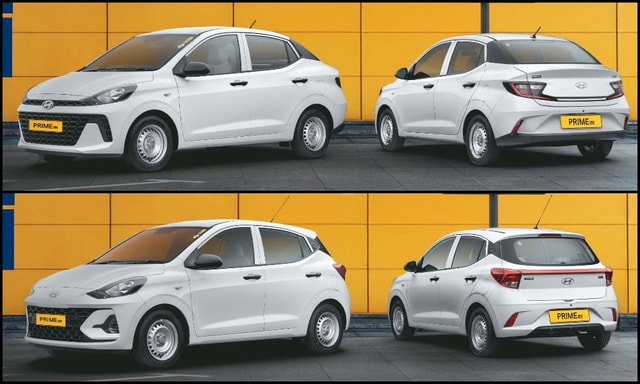What is EBD (Electronic Brake Force Distribution) and How Does It Work?

- Usually all ABS fitted cars have EBD as well
- It makes use of three components for its operation
- It varies the brake force on each wheel as per requirement
Most of the cars today come fitted with ABS or Anti-lock Braking system. Coupled along with ABS, there is another electronic marvel called the EBD or electronic brake force distribution. Simply put, EBD is a system wherein the amount of braking force on each wheel of the car can be varied taking factors such as load bearing on each wheel, condition of the road, speed of the vehicle and so on.
How does it work?
The simple idea behind an EBD system is that it need not be necessary to apply the same amount of braking force on each wheel so as to reduce the speed of the car or bring it to a complete stop. An EBD system makes use of three components which make it tick. The speed sensors, brake force modulators and electronic control unit (ECU).
1. Speed Sensor: The speed sensor not only calculates the speed of the car, but the speed of the engine also (RPM). One of the scenarios can be that the speed of the wheel might not be the same as the speed of the car. Such a situation can lead to the wheel(s) skidding. The speed sensors calculate the slip ratio and relay it to ECU.
2. Electronic Control Unit: It is a small chip which collects the data from the speed sensors in each wheel and uses the data to calculate the slip ratio (difference between the speed of the car and the rotation of the tyre). Once the slip ratio is determined, it makes use of the brake force modulators to keep the slip ratio within limits.
3. Brake Force Modulators: It is the job of these modulators to pump brake fluid into the brake lines and activate the brake cylinders. The brake force applied on each wheel can be modulated.
All these three components work in tandem and make the EBD work and save your day, every time you brake hard.
(Image Courtesy: CarblogIndia.com)Latest News
 Jaiveer Mehra | Jan 1, 2026New Kia Seltos India Launch Tomorrow: Here’s What You Should KnowThe second-gen Seltos has grown in size, promising improved interior space while remaining a tech-laden package.1 min read
Jaiveer Mehra | Jan 1, 2026New Kia Seltos India Launch Tomorrow: Here’s What You Should KnowThe second-gen Seltos has grown in size, promising improved interior space while remaining a tech-laden package.1 min read Preetam Bora | Jan 1, 2026Opinion: 2025 – The Year Of the Mid-Size Motorcycle Boom In IndiaThe mid-size motorcycle segment, encompassing 250-500 cc, truly came into its own in 2025. But will it be sustained going forward with increased GST rates?1 min read
Preetam Bora | Jan 1, 2026Opinion: 2025 – The Year Of the Mid-Size Motorcycle Boom In IndiaThe mid-size motorcycle segment, encompassing 250-500 cc, truly came into its own in 2025. But will it be sustained going forward with increased GST rates?1 min read Jaiveer Mehra | Dec 31, 2025Hyundai Creta Sales Cross 2 Lakh Units In CY2025Carmaker said the Creta diesel still accounts for over 40 per cent of all units sold, while the share of first time buyers stands at over 30 per cent.1 min read
Jaiveer Mehra | Dec 31, 2025Hyundai Creta Sales Cross 2 Lakh Units In CY2025Carmaker said the Creta diesel still accounts for over 40 per cent of all units sold, while the share of first time buyers stands at over 30 per cent.1 min read Carandbike Team | Dec 30, 2025Hyundai Aura, Nios-Based Prime SD & Prime HB Taxis Launched In IndiaCarmaker rebrands fleet models under the Hyundai Prime brand rather than as separate variants of its passenger car range, as it previously did with the Xcent1 min read
Carandbike Team | Dec 30, 2025Hyundai Aura, Nios-Based Prime SD & Prime HB Taxis Launched In IndiaCarmaker rebrands fleet models under the Hyundai Prime brand rather than as separate variants of its passenger car range, as it previously did with the Xcent1 min read car&bike Team | Dec 30, 2025VinFast's V-Green Partners With Hindustan Petroleum To Setup EV Charging StationsV-Green is owned by Pham Nhat Vuong, Chairman of Vingroup Corporation and founder of VinFast.1 min read
car&bike Team | Dec 30, 2025VinFast's V-Green Partners With Hindustan Petroleum To Setup EV Charging StationsV-Green is owned by Pham Nhat Vuong, Chairman of Vingroup Corporation and founder of VinFast.1 min read Jafar Rizvi | Dec 30, 20252026 Kawasaki Versys 650, Vulcan S, Z650RS Launched: Now E20 CompatibleKawasaki has updated its 650cc range of motorcycles with E20 fuel compatibility and is offering new paint schemes.1 min read
Jafar Rizvi | Dec 30, 20252026 Kawasaki Versys 650, Vulcan S, Z650RS Launched: Now E20 CompatibleKawasaki has updated its 650cc range of motorcycles with E20 fuel compatibility and is offering new paint schemes.1 min read
 Preetam Bora | Dec 30, 2025TVS Orbiter Review: Real-World Performance and Range TestedThe TVS Orbiter is a promising electric scooter promising decent range, practicality and pricing. But is there any reason to avoid it? We spent a few days getting to know it better.9 mins read
Preetam Bora | Dec 30, 2025TVS Orbiter Review: Real-World Performance and Range TestedThe TVS Orbiter is a promising electric scooter promising decent range, practicality and pricing. But is there any reason to avoid it? We spent a few days getting to know it better.9 mins read Jafar Rizvi | Dec 24, 2025MG Windsor EV 38 kWh Long-Term Report: IntroductionThe Windsor EV has joined our garage, and before it settles into daily duty, I took it out to get a sense of what living with an electric car is like.4 mins read
Jafar Rizvi | Dec 24, 2025MG Windsor EV 38 kWh Long-Term Report: IntroductionThe Windsor EV has joined our garage, and before it settles into daily duty, I took it out to get a sense of what living with an electric car is like.4 mins read Seshan Vijayraghvan | Dec 23, 20252026 Kia Seltos Review: Formula Is Spot On, But Is The Timing Right?The 2nd-gen Kia Seltos has arrived, but it has the challenge of facing strong rivals like the Victoris and Sierra. The question is simple - Does it still have what it takes?9 mins read
Seshan Vijayraghvan | Dec 23, 20252026 Kia Seltos Review: Formula Is Spot On, But Is The Timing Right?The 2nd-gen Kia Seltos has arrived, but it has the challenge of facing strong rivals like the Victoris and Sierra. The question is simple - Does it still have what it takes?9 mins read car&bike Team | Dec 26, 2025Tata Punch EV Long-Term Second Report: Highway Performance, Pros & ConsAfter a week of living with the Tata Punch EV Long Range—including a proper Mumbai-Nashik highway test—we've learned what this little electric SUV is really made of.1 min read
car&bike Team | Dec 26, 2025Tata Punch EV Long-Term Second Report: Highway Performance, Pros & ConsAfter a week of living with the Tata Punch EV Long Range—including a proper Mumbai-Nashik highway test—we've learned what this little electric SUV is really made of.1 min read Seshan Vijayraghvan | Dec 22, 20252026 Tata Harrier & Safari 1.5 Hyperion Review: By The Power Of Petrol!The new Tata Harrier and Safari petrol packs a new 1.5-litre TGDI Hyperion engine, but is it an ideal alternative to the diesel version?7 mins read
Seshan Vijayraghvan | Dec 22, 20252026 Tata Harrier & Safari 1.5 Hyperion Review: By The Power Of Petrol!The new Tata Harrier and Safari petrol packs a new 1.5-litre TGDI Hyperion engine, but is it an ideal alternative to the diesel version?7 mins read



















































































































